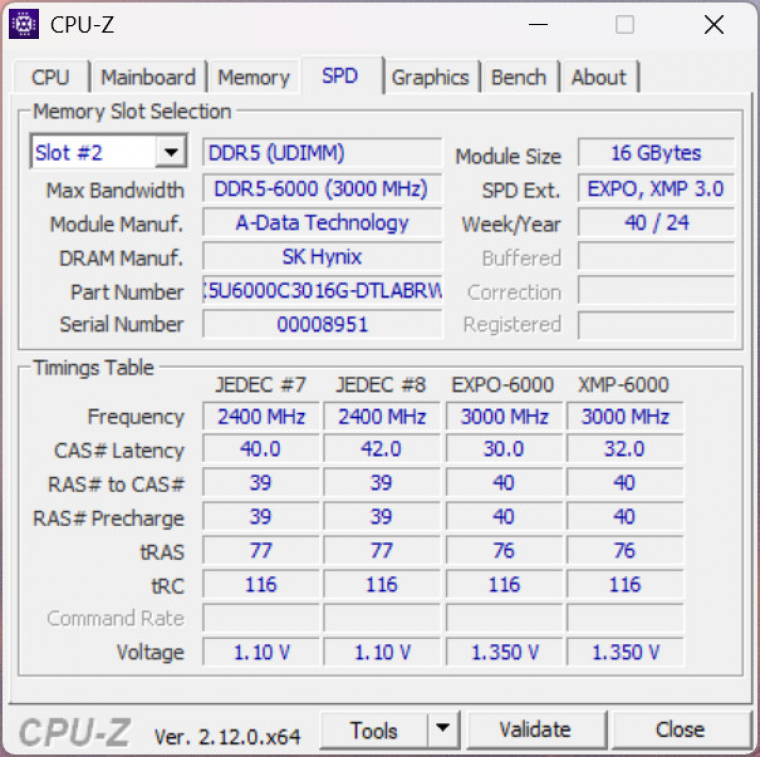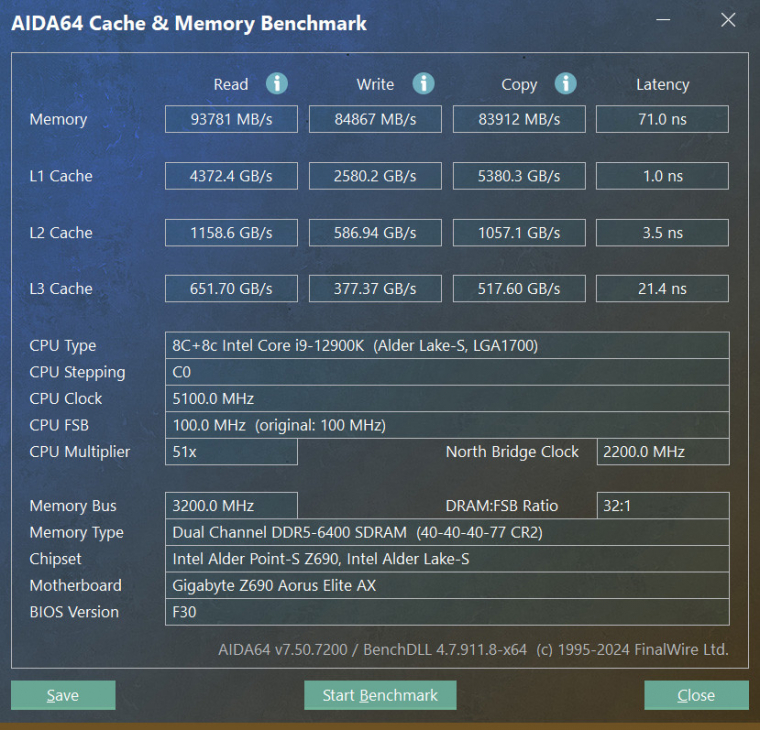At first glance, the new-generation member of the manufacturer’s XPG product line looks like another pair of DDR5 modules, but with a little manual fine-tuning, it gives your machine an extra speed boost.
The ever-expanding expansion of DDR5 can be further strengthened this year by CUDIMM modules, although we have to quickly add that the mass distribution will not be facilitated by the sets above HUF 100,000 either. The new technology is nice and nice, and as our test showed, Intel’s currently failing Core Ultra 200S series processors can even do good, but the pricing is brutal and difficult to digest.
Much more attention is directed towards modules offering a capacity of 32 GB at a third price, among which it is not at all difficult to find copies with a great price-value ratio. We could say that the brand doesn’t matter, the essence lies in the specifications, but it is no coincidence that one or another manufacturer has decades of history in the DDR memory market.
In line with the trends, ADATA separated its gamer series components from the main brand and offers quite good knowledge and performance under the XPG logo. There won’t be many surprises this time either, but if you’ve just started RAM hunting, you should stop right at the very beginning of the ABC sequence and choose.
A cleverly designed blade
In the very first DDR5 tests, we last encountered modules whose heatsinks did not protrude excessively from the height of the printed circuit and did not contain some kind of RGB-based lighting effect. Many manufacturers fumbled with the new standard, how they would be functional and stable on the first Intel platform, there was a problem, but the braver ones reached the 6000 MT/s level relatively quickly.
This bandwidth data is interesting, since at that time we thought that we would gradually move up, and somewhere between 8,000-10,000 MT/s, DDR5 would have an ideal peak. However, the memory controllers integrated in the processors do not dictate the pace in this way, on AMD’s AM5 platform, the two generations so far feel comfortable at the 6000 level, while some of the boards with the 600 chipset in Core processors are not really capable of supporting higher frequencies. Newer CPUs love high numbers, of course, but Arrow Lake also sees the fact that keeping latency low is key.
Thus, this Lancer Blade is an absolute hit, if we consider that the majority of PC builders choose from the 6000-6400 DDR5 level. On the one hand, quite good price-value ratios have developed here, and on the other hand, the developing memory production and control enables those in the know to squeeze a step or two higher data transfer out of the given module. Overdrive is also a matter of luck, but ADATA offers a lot as a pleasant surprise.
Low speed intoxication
Going back to the design a little, the low profile can be a blessing for all those who like a compact design, even in terms of components, and don’t like to look at excessive cooling fins and frames that take up more space. There is still room for the RGB light strip, and the white color can be nice for those who imagine the interior of the PC in this color. It is also available in black, it’s really a matter of taste which one you choose, the speed data is the same for both variants.

It is not unique, but the engineers deserve a red point for sending this version of the Lancer Blade into battle with Intel XMP 3.0 and AMD EXPO profiles. After that, you have no reason to worry about not being able to enable one of them in your beloved machine, the motherboard of the compatible platform immediately recognizes the profile, with two clicks and a restart (with AMD, the latter is no longer necessary), the 6000 MT/s is already available data transfer, even with CL30-40-40-76 timings. The results bring the expected level, but our good news is that you don’t have to stop there.
You can decide whether to increase the data transfer value or decrease the timings – depending on the platform, processor and the overall system tuning, which is the better direction. With this module, the level of 6400-6667 MT/s is not impossible either, but for stability, a voltage increase of a maximum of one tenth is necessary. If everything comes together, then the CL30 timing line will also be maintainable, with which you will immediately see the progress in synthetic programs.
Nothing special happened here yet, we just enabled transfer set to 6400 for the XMP profile. The CL38 is not bad, with a small voltage increase you can expect stable operation even at a lower value

The other way leads to the CL28 level, at which point you should not fiddle with the 6000 MT/s setting, but rather slowly step down the delay. It may not be spectacularly measured, but e.g. a Ryzen 9000 processor will be very grateful for this.
Those crazy lights
To be more precise, we don’t have a problem with the RGB function itself, because otherwise you get beautiful and homogeneous lighting interspersed with effects, which you can control and synchronize from the control software of any motherboard. There is nothing more to it, since it works without problems, but XPG Prime, which exists as a separate utility, still wants to offer something extra. The only problem is that it becomes a really useful program if you have installed several components from the manufacturer’s product range, otherwise it doesn’t make much sense.

In addition, the information on the website draws attention to the fact that it is not worth using together with motherboard utilities, and in fact, you should not force the installation of one or the other together. This is not very user-friendly, presumably more people would like to use the program package created by the manufacturer of the motherboard, and the management of RGB lights is also very easy in these. Be that as it may, not one application will overshadow the virtues of the Lancer Blade, which are indisputably present.
Do you need more than that?
If the pricing is good, then the majority would probably answer that it is completely unnecessary. The truth is a little more nuanced than this, as the Core Ultras perform really well with CUDIMMs, and the Ryzens are happy with each CL reduction, and after loading EXPO, the system welcomes further fine-tuning as well. Well, the latter is thickly ticked off by ADATA’s pair of modules, but Intel users don’t have to worry either, we just gave a 12th generation Core i9 some extra memory, and Alder Lake can certainly fit the extra bandwidth.
You get both profile management at the same time, in a low configuration and with RGB lights, and the 32 GB capacity will be enough for a long time. It’s an ideal component for a gamer configuration, and you won’t be disappointed with the tuning either.
Source: www.pcwplus.hu


